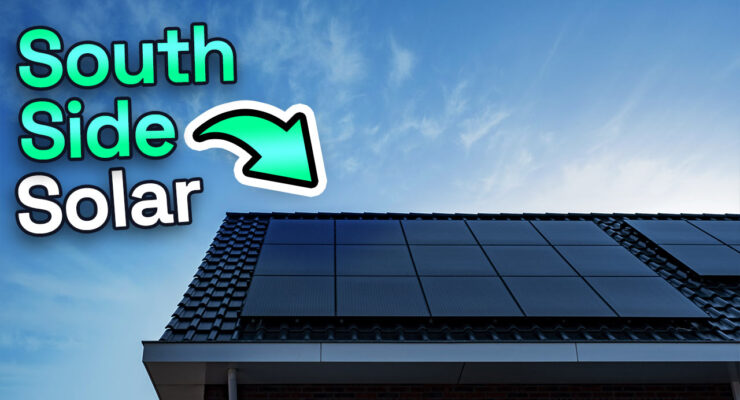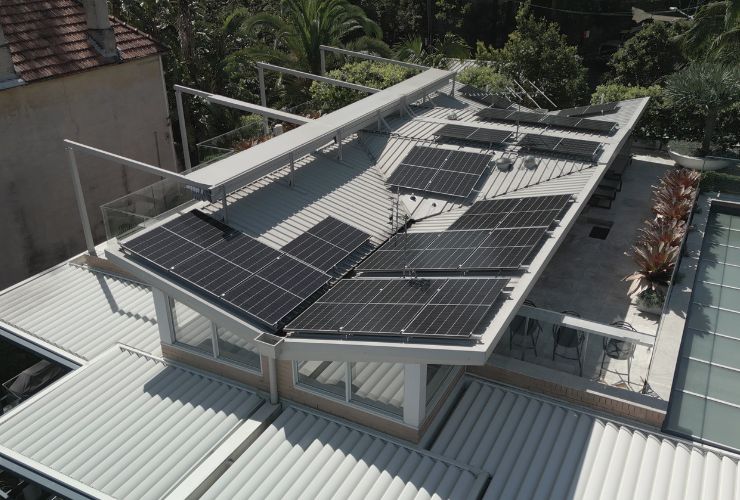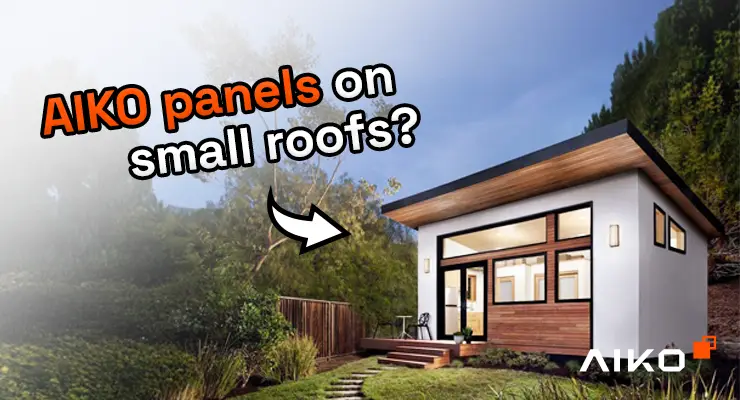
Fast read
In Australia and New Zealand, Solar panels are the most efficient and produce the most electricity when facing true North. However, installing solar panels on a South facing roof is still possible. For example, a standard 23-degree pitch roof pointing South in Sydney can still generate 60% of the electricity of a perfectly North-facing roof.
The angle of the sun and the intensity of light hitting the panel affects the amount of electricity produced. On a South facing roof, less electricity will be produced in winter. With most electricity being produced in the summer.
This makes it an excellent option to cover summer electricity demands like air-conditioning and pool heating. However, knowing the limitations and engaging with a qualified local supplier or solar installer for advice and assistance is important.
What is wrong with south facing solar panels?
Not every roof gets direct sunlight or faces the perfect direction for solar panels, like true North. This makes people with less-than-perfect roof direction wonder if solar is even worth it. So, do solar panels need direct sunlight, and is it okay to install them facing south?
Well, solar panels don’t need direct sunlight to work great even in indirect or diffused sunlight, they can still make power. So, if your roof doesn’t face the perfect direction or gets sunlight all day, you can still benefit from solar panels.
Now, about south facing roofs, it’s actually a good idea, while facing true North is best, south facing panels can still make a lot of power. You just need to check your situation, considering things like how your roof is set up and if there’s any shade. Even if your roof faces south, putting up solar panels can be a smart way to get clean energy, save money on electricity, and make your home more eco-friendly.
Can someone install solar panels on a southern roof?
While solar panels perform at their peak when facing North in locations like Australia and New Zealand, they can still function effectively on a South facing roof. For instance, consider a standard roof with a 23-degree pitch facing South in Sydney – it can generate approximately 60% of the solar electricity that a perfectly North-facing roof would produce.
This means that even if your roof is not ideal orientation, installing solar panels on a South facing roof remains a viable option, especially when space is a constraint, and you aim for a larger solar system. The key is to strike a balance that suits your roof’s characteristics and energy needs, ensuring you still benefit from the advantages of solar power.

How do panels work on a south facing roof?
The more direct the sun is pointing towards the solar panel (e.g. directly above the sky at 90 degrees to the panel). Therefore, the solar panel will generate more power as the light hitting the panel is more intense; however, as that angle increases during the day or season. For instance, in the late afternoon, the intensity of light decreases because of the angle at which it directly hits the panel.
Similarly, for south facing roofs and solar panels, the sun’s angle (particularly in winter) to the panel is lower; for some parts of the day, little direct sunlight will hit the panels.
When your solar panels face South, they get less sunlight overall. This means they produce less electricity. This is more noticeable in the winter when the sun is lower in the sky. So, during the winter months, these panels might not make as much electricity because there are fewer hours of sunlight, and the sun is lower.
But here’s the good part: in the summer, when the sun is higher up, it shines directly on the South facing solar panels for a longer time.
South facing roofs become a smart choice for meeting your electricity needs in the summer. Think about running your air-conditioning or heating the pool – these panels are great for that.
Even though they might not be as effective in the winter, their ability to soak up lots of sunlight in the warmer months makes them quite useful. So, it’s like having a balance – they may not be perfect all year round, but they do a great job when the sun is shining bright.
What the future will hold
In the years to come, homeowners are expected to extend the utility of their solar power systems beyond traditional electricity use. One significant trend on the horizon is the increasing reliance on solar power for charging electric vehicles (EVs). This means utilizing the sun’s energy to fuel EVs, contributing to a more sustainable and environmentally friendly mode of transportation.
Additionally, the integration of solar technology into hot water generation is gaining momentum, particularly through innovations like heat pumps. These systems leverage solar energy to efficiently heat water for various household needs.
As homeowners explore these advancements, solar systems are poised to become versatile solutions, encompassing not only standard electricity requirements but also powering EVs and providing eco-friendly hot water solutions. This multifaceted approach not only aligns with sustainable living but also holds the promise of long-term cost-effectiveness.


